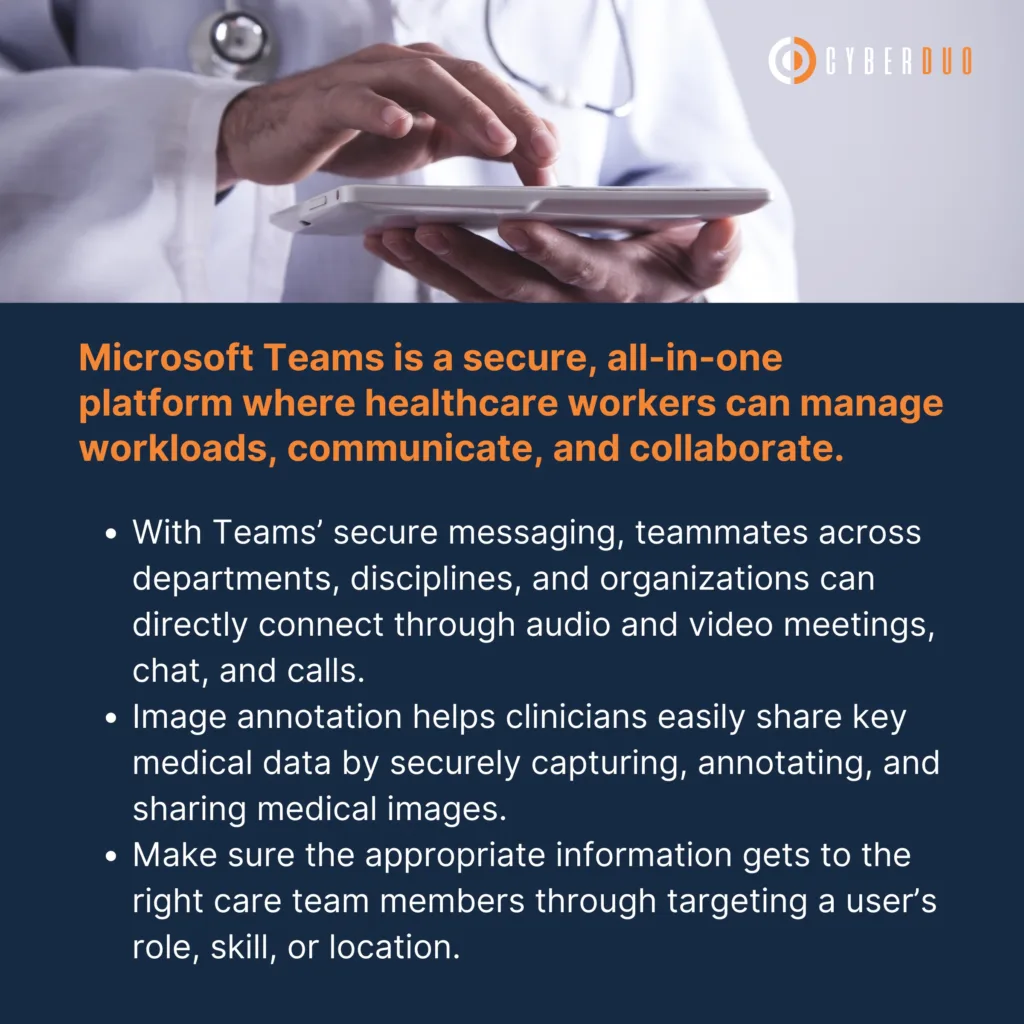
The pandemic has had drastic impacts on most industries. Since healthcare workers are at the forefront of the pandemic, the way health organizations approach care team collaboration has shifted to adapt to the evolving industry, and best serve patients. Health teams need a single platform to securely collaborate and share accurate, up-to-date patient information and data. In today’s digital environment, it is a huge priority for healthcare organizations to ensure a secure and efficient collaboration for their teams to support patients. Dispersed teams and platforms limit productivity and secure collaboration, hampering with patient satisfaction. Ensuring collaboration for patients and healthcare workers remote or in office is essential for making patient insights securely accessible and accelerating patient care.
Microsoft Teams is a secure, all-in-one platform where healthcare workers can manage workloads, communicate, and collaborate.
A central hub that lets health teams seamlessly collaborate through secure messaging, calls, and meetings. It helps health teams coordinate care and simplify the process of workflow management, enabling them to collaborate securely across multidisciplinary teams, whether remotely or in the office.
- Make collaboration easy and efficient by enabling care teams to communicate directly with people inside and outside the organization.
- Organizations need to ensure that urgent connection between care team members is simple, seamless, and secure.
- With Teams’ secure messaging, teammates across departments, disciplines, and organizations can directly connect through secure messaging by using audio and video meetings, chat, and calls.
- Microsoft Teams securely works across all devices such as phones, desktop, web, etc.
- Make sure the appropriate information gets to the right care team members through targeting a user’s role, skill, or location.
- Use the targeting feature within Teams to quickly find and consult the right care team members. With targeting, valuable information besides the contact’s name can be accessed securely to improve search accuracy and speed.
- The targeting feature can integrate with the Shifts feature to ensure a message for an on-call specialist will be delivered only to currently working team members.
- Priority notifications allow care team members to focus their attention and time on urgent matters first.
- Since care teams are flooded with competing priorities daily, priority notifications make it easy to choose which messages to prioritize.
- This makes it simpler to alert a care team member of an emergency or send a non-urgent message without distracting a specialist during patient care.
- Image annotation is a feature that helps clinicians easily share key medical data by securely capturing, annotating, and sharing medical images with other care teams and specialists.
- This feature enhances visual communication and the ability to clarify medical details by allowing clinicians to share images directly from Teams without sensitive data being stored on a mobile device, posing a security risk.
Some examples of what healthcare organizations can achieve with Microsoft Teams are:
- Enabling direct, real-time communication among large and diverse care teams
- Improving the ability to track patient statuses
- Support coordinated patient transfers
- Simplify the process of pharmacy orders